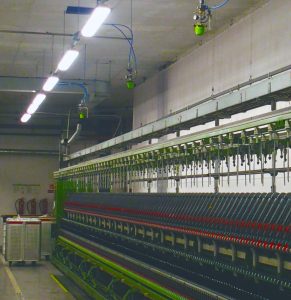Textile
Spinning process
Process
The spinning process is one of the most essential steps in the textile industry. In addition, it is a process where the textile fibers and filaments are transformed into yarn. Above all, there are 3 stages present in the spinning process:
- Blowing and mixing
- Carding
- Spinning
Moreover, the textile fibers can refer to raw materials, such as
- cotton
- polyester fibers
- silk, and
- wool fibers.
Firstly, these raw textile fibers are submitted to the raving process, where the main objective is to reduce the sliver to an amount suitable for spinning. Furthermore, within this process of spinning, the fibers are drew out from the mass and they are additionally winded. Therefore, this leads to the creation of a produce in the form of continuous threads or yarn. After that, the yarn will be further twisting onto a ring bobbin machine and ready to pass it to the winding process, for weaving or knitting into fabrics.
Solutions
Recommended solutions
To ensure the preservation and quality of the yarn, it is imperative to maintain a certain level of moisture and humidity. To assist with the control and management of the moisture and humidity level, the implementation of the AKIMist “E” can provide various benefits. Its “Dry Fog” fine droplets create the optimum environment where the moisture penetrates faster and more efficiently within the textile fibers. However, the AKIMist “E” can also function as a powerful backup of the steam moisture-conditioning machines.

